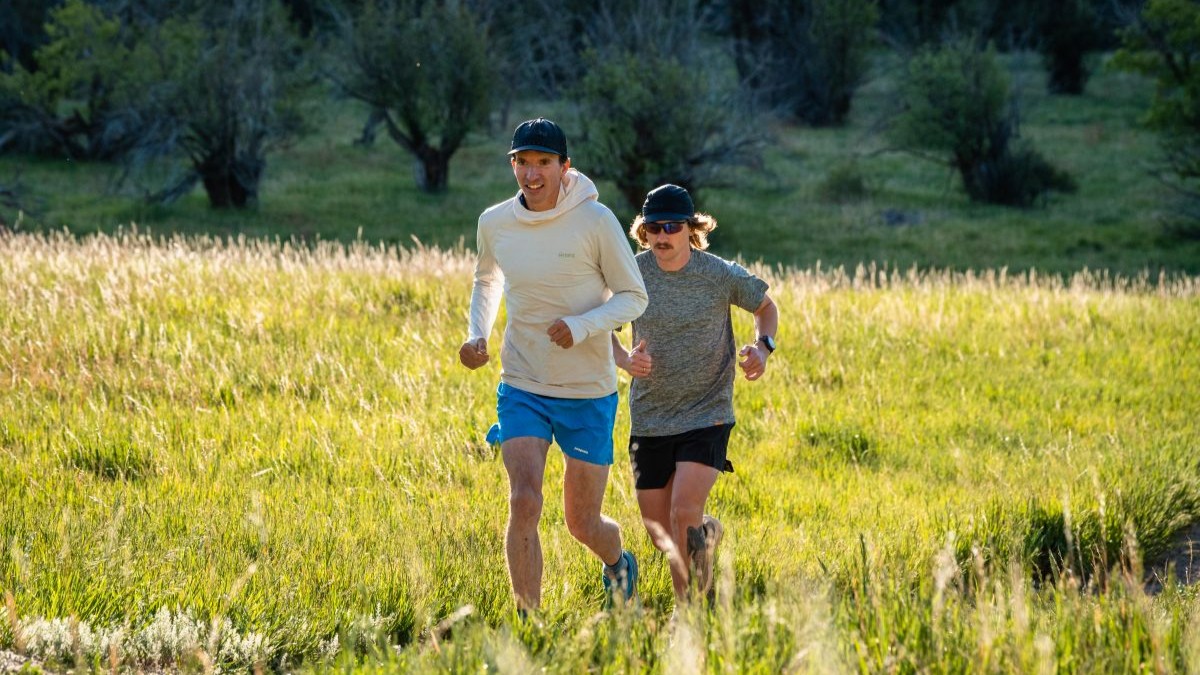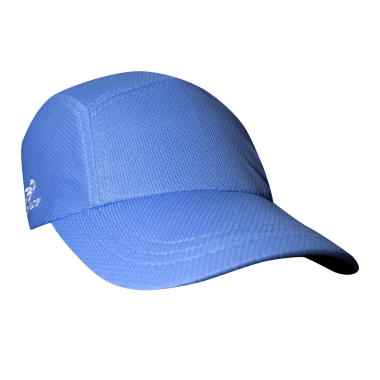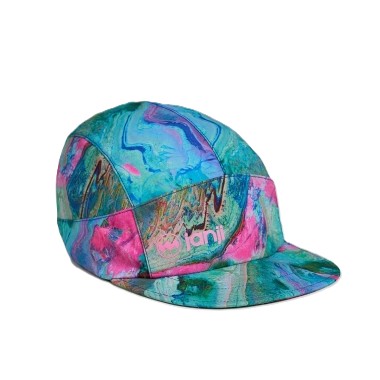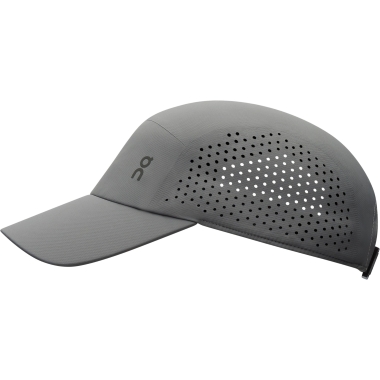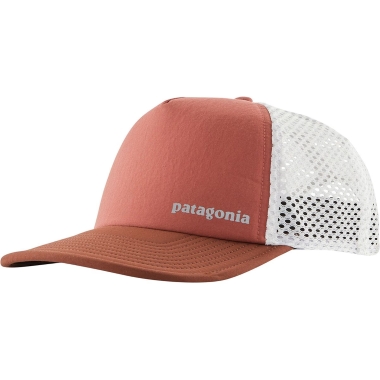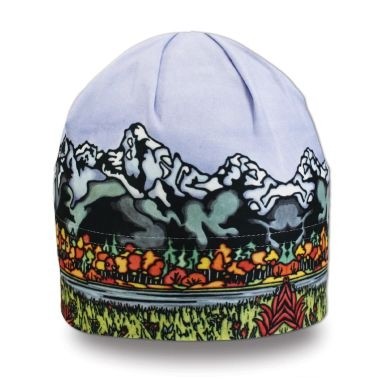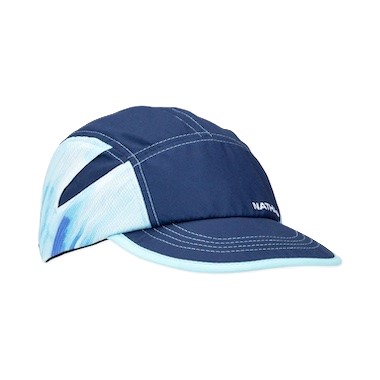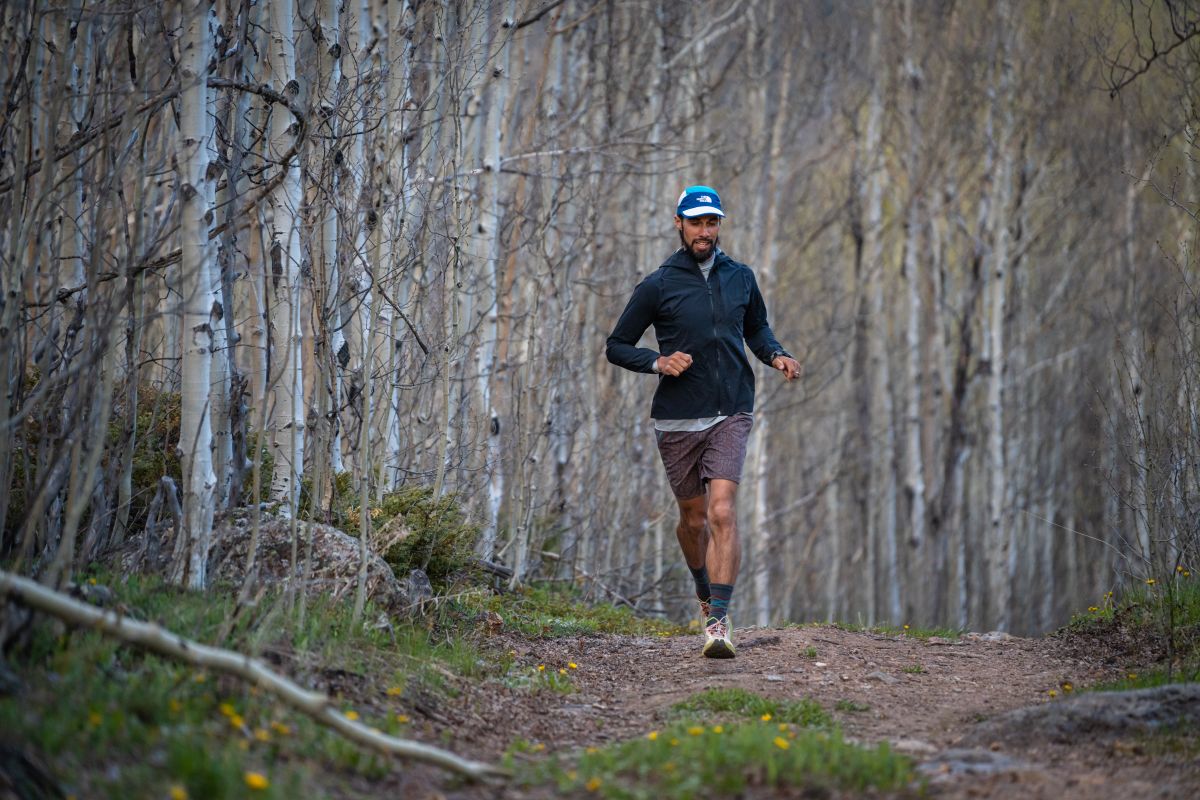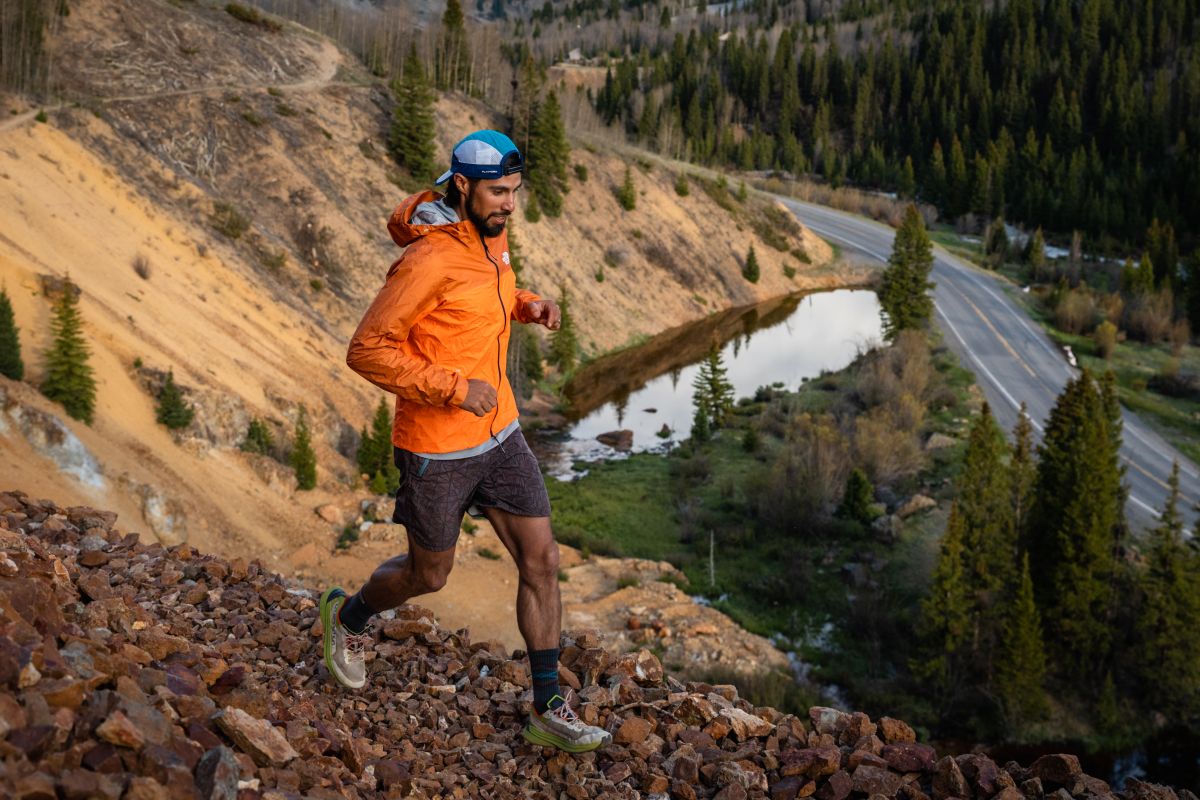While there are endless options for running hats — and choosing the right one can seem like an impossible task — the best running hats have several features that make them stand out from the rest. Hats can shield your face, eyes, scalp, and lips from the sun, keep rain off your face, wick sweat, and keep hair contained. Today’s best running hats have evolved from simple and utilitarian tools into nuanced pieces of gear. They offer UV protection, wick sweat, dry swiftly, and help regulate temperature, and some trail runners and ultrarunners place a premium on hats that fit into running packs without losing their shape. Hats need to pair well with our favorite running sunglasses, adjust easily on the fly, and not impair visibility.
To help you choose the best running hat, our crew of professional, competitive, collegiate, and recreational trail runners and ultrarunners donned a range of top-rated running hats — and a few that aren’t on the typical runner’s radar — for hundreds of miles through all seasons of the year. We ran from dusk to dawn across the Rocky Mountains and the western U.S. in all types of weather. We loved the Headsweats Running Hat for its excellent performance in nearly all conditions as well as its low cost, turned to the Outdoor Research Sun Runner Cap when we needed maximum sun protection, and chose the Sauce Swift Toque for winter conditions.
You can learn more about our testing and methodology, how to choose a running hat, or our answers to frequently asked questions.
Best Running Hats
- Best Overall Running Hat: Headsweats Running Hat
- Best Overall Running Hat — Runners-Up: Janji AFO Hyperlight Cap and On Lightweight Cap
- Best Classic Running Hat: Patagonia Duckbill Trucker Hat
- Best Sun Shade Running Hat: Outdoor Research Sun Runner Cap
- Best Winter Running Hat: Sauce Swift Toque
- Best of the Rest Running Hats: Territory Run Co. Long Haul Cap, Nathan RunCool Ice Run Hat, Patagonia Terrebonne Lightweight Hat, The North Face Summer LT Run Hat

The best running hats strike a balance between keeping you cool and providing adequate sun protection. Photo: iRunFar/Eszter Horanyi
Best Overall Running Hat: Headsweats Running Hat ($25)
Pros:
- Tremendous value
- Great fit
Cons:
- Brim may sit too low for some
Sometimes, you just want a hat you can put on your head and run, and the Headsweats Running Hat comes with a price tag that allows you to not think twice about owning it. This hat is inexpensive, extremely comfortable, and packed with features. This hat doesn’t bounce or shift during a run — in fact, we barely noticed we were wearing it at all. The knit polyester material is soft and supple, and the cap sits lightly on your head. The brim shades well, too, and the hat never felt restrictively hot while we tested it on dusty summertime trails in southern Colorado.
Some of our testers thought that the brim sats too low over their eyes, even when they tightened it, which makes for excellent shading but a limited field of view, especially when traveling in brushy terrain. This limited field of vision can potentially create a dangerous situation if you’re running on trails with low overhanging branches or rocks. It’s worth noting that other testers did not experience the same issue. Overall, that’s a small knock on an otherwise excellent — and budget-friendly — hat.
Shop the Headsweats Running HatBest Overall Running Hat — Runner-Up: Janji AFO Hyperlight Cap ($38)
- Easily packable
- Lightweight
Cons:
- Expensive
If you’re searching for a barely-there hat that will keep the sun off your face, look no further than the Janji AFO Hyperlight Cap. Weighing only 29 grams, there’s really nothing much to this hat, and it packs away to nearly nothing. It’s an excellent option for a hat that will scrunch up and fit into almost any running pack if you don’t want to wear it for the entirety of a run — ideal for someone who starts or ends runs in the dark, when you don’t need a hat to protect your face from the sun anymore. We appreciate that the bendy foam brim retains its shape, even after riding around in a pack for hours, and it provides enough sun protection for the face.
The bungee strap on the back of this hat makes it easy to tighten down and micro-adjust when the wind picks up, but it never felt like the hat fit too tightly, even when we had it cranked down to keep it on our heads. The material is fast-drying and great for dunking in a creek during a mountain run to cool the head. As with many products from Janji, environmental impact is a top consideration, and the AFO fabric is made of 88% recycled polyester amd 12% elastane. It is also bluesign certified, meaning that the manufacturing process met strict environmental and safety standards. And, best of all for some of us, it comes in some classic colors and cool designs.
Shop the Janji AFO Hyperlight CapBest Overall Running Hat — Runner-Up: On Lightweight Cap ($45)
- Quick-drying
- Lightweight
- Ventilation ports in sweatband
Cons:
- Sweatband texture is a bit abrasive
- Not easy to adjust tightness while being worn
- Expensive
The feather-light On Lightweight Cap fits comfortably and securely, and it features a robust bill, making it one of our favorite workout hats. It has the classic style of a traditional sleek and streamlined running hat with a fairly normal-sized brim and non-structured material to cover the head. The cap material is pliable and soft, while the rigid, wide brim will withstand abuse and offer consistent form and protection over time. Unlike flat-brimmed trucker caps that are becoming increasingly popular, this brim has a fairly significant curve to provide sun protection.
The cap’s sides feature uniform ventilation holes laser-cut into the polyester fabric. The reasonably soft one-inch-wide sweatband snags salty droplets well so that they don’t end up in your eyes. The hat also has a garage to secure the adjustment strap’s tail. When the sun is overhead, the bill does an excellent job of keeping light from hitting the face, neck, and the top of the ears if you tuck them into the hat.
Shop the On Lightweight CapBest Classic Running Hat: Patagonia Duckbill Trucker Hat ($40)
- 100% recycled nylon
- Back clip is easy to adjust while being worn
- Super breathable
Cons:
- Mesh portion on half of the cap doesn’t keep sun off head
- Pliable bill can curl upward over time
The Patagonia Duckbill Trucker Hat is comfortable, extremely breathable, quick-drying, and lightweight, making it perfect for running and cross-training adventures.
This running hat hardly needs an introduction. We originally bought this hat for trail running years ago and have pulled it on for nearly every other type of outdoor adventure. The front of this cap is a nylon-foam blend, and the back is made of a polyester mesh, which is super breathable. Unfortunately, the mesh doesn’t provide much sun protection, which is something to consider if you don’t have a lot of hair to cover your head. We’ve found this to be one of the best cooling hats, and the design fits seamlessly beneath climbing and mountain bike helmets. This makes it a versatile option if you do a lot of sports. The crown and bill have a durable water-repellent finish that wards off rain, splashes, and snow. To our surprise, the material floats well, too, as a tester discovered on a multi-day standup paddleboard trip.
The plush sweatband is soft, absorbs sweat quickly, and dries fast. If you’re looking for a comfortable, breathable, heat-releasing hat that pairs well with other activities, this is your new best friend.
We don’t love that there isn’t a garage for the adjustment strap, as we found that it bounced around when we ran. This was mostly only a nuisance when wearing the hat backward. We also found that the brim took on various shapes after being packed away for extended periods and would curl upward over time.
Shop the Patagonia Duckbill Trucker Hat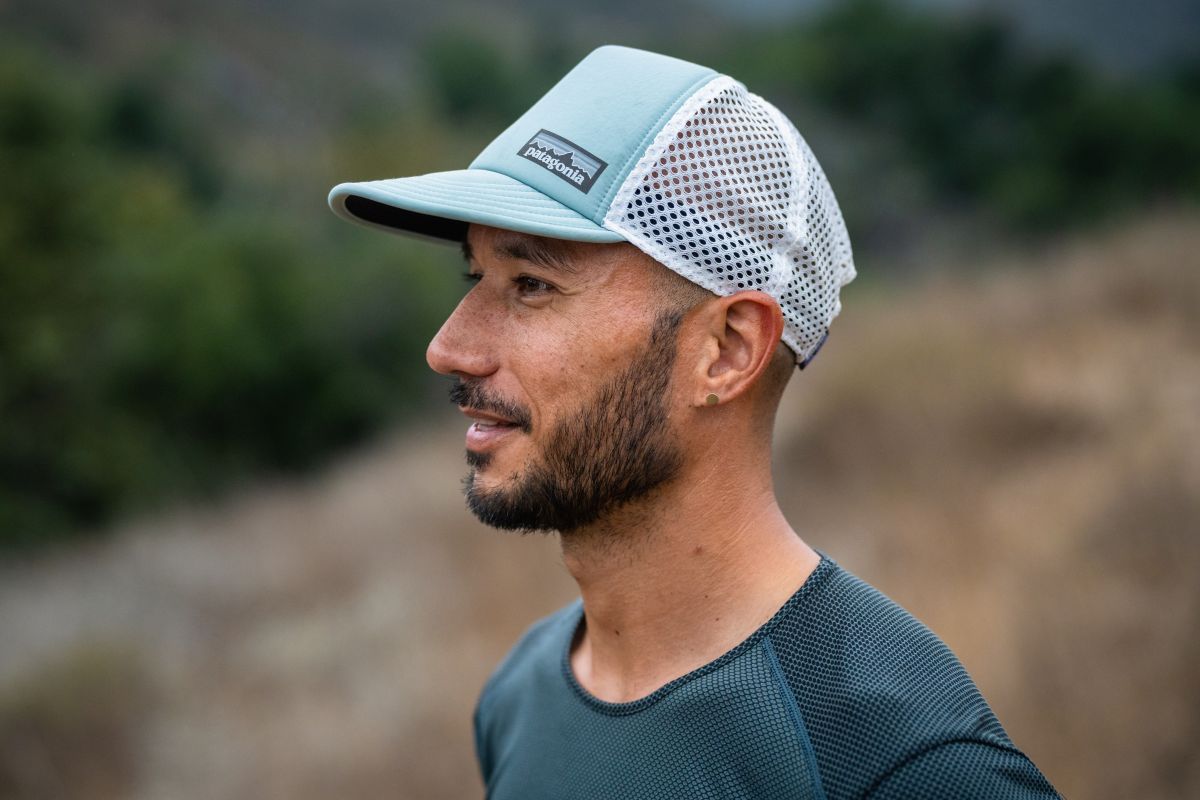
The Patagonia Duckbill Trucker Hat is a classic hat renowned for its comfort and breathability. Photo: iRunFar/Eszter Horanyi
Best Sun Shade Hat: Outdoor Research Sun Runner Cap ($40)
- UPF 40 rating that is extremely UV protective
- Convertible hat that pairs with a breezy sun cape
- Great value
Cons
- Bill is an iota smaller compared to other hats tested
- Not a hat to wear outside of running or other outdoor activities
The Outdoor Research Sun Runner Cap is a versatile option that can provide unmatched skin protection for the head, face, and neck for those who want as much sun protection as possible. The breathable and moisture-wicking sun cape is detachable, so you can wear this as a simple hat or one with neck protection. This hat features a water-resistant, breathable, moisture-wicking, and fast-drying material, and while the sun cape makes it hotter than other options, we could still wear it comfortably in warm temperatures. While testing the hat and cape, we experienced no issues with the field of vision, either upward or in the periphery.
Overall, this is a very comfortable setup. The cape fabric hangs around, not against, your face. A chin cord tightens so the fabric won’t flap around, keeping it from being distracting and noisy. Superior to many hats here, the 100% nylon fabric is treated to protect skin against harmful UV rays. The hat’s wide sweatband absorbs sweat and feels soft against the forehead. Mesh side panels release heat effectively, and the entire hat is light and packable.
While a hat with a sun cape might be considered overkill for shorter runs, it could be an excellent option for longer outings during periods when the UV index is high.
Shop the Outdoor Research Sun Runner CapBest Winter Running Hat: Sauce Swift Toque ($32)
- Lightweight
- Fun patterns
- Cozy
Cons:
- Might be too warm for mild temperatures
When it comes to cold-weather running, the cross-country ski industry has dialed in gear, so it’s no surprise that the Sauce Swift Toque emerged as our favorite winter running hat. Based out of Bozeman, Montana, Sauce was founded by a former elite Canadian cross-country skier, and the names of the products reflect the Canadian heritage. We also named this our favorite beanie in our Best Cold Weather Running Gear guide. Cross-country skiers’ and runners’ needs are fairly similar regarding breathability and warmth — they are both highly aerobic sports performed at relatively similar speeds — and this beanie provides the right amount of warmth for cold temperatures. We found that it was too warm for merely mild temperatures, especially for high-effort runs, and not quite warm enough for the extreme cold, especially during easy jogs, but it was perfect for the temperatures most of us encounter during our winter runs.
The majority of the hat is made of a single layer of fabric that is doubled over on itself on the forehead to provide extra warmth. The stretchy and cozy material blocks wind, but we found it to release enough heat that we didn’t overheat, even when running hard. The hat comes in two sizes and can stretch to fit nearly any head size comfortably. It comes in various fun patterns — with fun names — and you can add a tassel or leave it as just a beanie.
Shop the Sauce Swift ToqueBest of the Rest Running Hats: Territory Run Co. Long Haul Cap ($40)
- Great fit
- Breathable and moisture-wicking
- Can wear outside of running
Cons:
- Pricey
We must admit that we love a performance hat with a fun design, and the Territory Run Co. Long Haul Cap appeals to both our function and fashion senses. It is light and breathable, and it stays put throughout long runs, including on fast descents and blustery mountain trails. Its five-panel design offers an excellent fit for a wide range of head shapes and sizes. And it comes from a small company based in Portland, Oregon.
We were quickly able to adjust the hat and never experienced any headaches or irritations, even when wearing it for many hours while training for and racing the IMTUF 100. This breathable hat with laser-cut perforations is nice and cool even during intense efforts, and we’d often dunk it in the water during creek crossings on especially hot runs. This hat also provides more sun protection than a minimalist mold, and its brim stuffs into a pocket without getting creased or losing its shape.
Overall, it’s a comfortable hat you can forget you’re wearing, even after many miles.

We loved the Territory Run Co. Long Haul Cap for its function and style. Photo by iRunFar/Alli Hartz
Best of the Rest Running Hats: Nathan RunCool Ice Run Hat ($25)
- Great fit
- Lightweight and breathable
- Good price
Cons:
- Pockets aren’t the most practical
Long runs in hot weather call for strategic cooling, and the Nathan RunCool Ice Run Hat has some unique features. With a lightweight mesh fabric that’s breathable and quick-drying and pockets for holding ice cubes, this is a highly functional hat, especially for race day when you might have regular access to ice at aid stations.
Most importantly, this hat is comfortable and easy to adjust on the fly. The brim provides shading, but it also flips up easily if the day is overcast and you want a broader field of vision. The hat does an excellent job of wicking sweat and keeping it out of your eyes. While the pockets are nice for momentary relief during hot races when you have ice on hand, this cooling strategy won’t be as effective as dumping ice in your hydration vest, sports bra, or gaiter around your neck. And since the pockets don’t zip closed, they’re not practical for carrying anything else, such as cash. That said, this is a great everyday running hat, at a very competitive price, with the bonus of it being designed for cooling.
Shop the Nathan RunCool Ice Run HatBest of the Rest Running Hats: Patagonia Terrebonne Lightweight Hat ($45)
- Comfortable
- Wicks sweat well
- Looks good enough to wear before or after runs
Cons:
- Annoying to re-size
We love the Patagonia Terrebonne Lightweight Hat for its combination of functionality and style — or, in one word, its versatility. It looks like a typical hat you’d wear in a casual or social setting, but it also has some performance chops. As its name suggests, the hat is light, weighing only 2.6 ounces (74 grams). Thanks to the breathable recycled polyester, it’s also excellent at wicking sweat and drying. The mid-crown style will fit most head sizes and shapes.
Most of our testing took place in Southern California during the late winter and early spring, where it can be sunny and warm on some days and rainy or foggy on others. The hat flexed its versatility as it quickly wicked and evaporated sweat on sunny day runs and provided rain protection on rainy runs. Unlike most other hats in this guide, the Patagonia Terrebonne Lightweight Hat features a PFAS-free durable water-repellent (DWR) finish so that it doesn’t absorb precipitation immediately.
And since it’s Patagonia, it checks many of the social and environmental responsibility boxes. The hat’s material is 100% recycled polyester. It has a brim stiffener made entirely of recycled fishing nets, and it is constructed in a Fair Trade Certified factory. Our one nitpick is that the adjustment band isn’t the easiest to tighten or loosen, making it annoying when you need to change the hat’s size.
Shop the Patagonia Terrebonne Lightweight HatBest of the Rest Running Hats: The North Face Summer LT Run Hat ($40)
- Super lightweight and breathable mesh panels
- Comfortable
- Easy to adjust the size
Cons:
- Only good in warm climates
If you’re looking for a hat specifically for warm- and hot-weather running, we recommend The North Face Summer LT Run Hat. It is very lightweight and one of the most breathable hats in this guide, thanks to its mesh side panels. The North Face uses its FlashDry technology, which helps boost moisture management by wicking sweat quickly for efficient evaporation. The Lightrange fabric includes anti-odor technology, and after a couple of months of use, it passes the sniff test. We like the emphasis on breathability, moisture management, and odor blocking, as we haven’t noticed stink or salt deposits from sweat on the material like we saw on some other hats tested for this guide.
This hat also has a PFAS-free DWR finish, a flippable brim, and an easy-to-adjust Velcro strap for quick sizing adjustments. It also features some planet-friendly qualities, including mostly recycled materials.
We don’t have any major qualms with this hat. The adjustable band might cause some discomfort if you wear the hat backward for long periods. We envision this hat as an excellent option for anyone running a hot ultramarathon or traditional marathon, or anyone living in a hot climate.
Shop The North Face Summer LT Run HatBuying Advice: How to Choose a Running Hat
Fit
The majority of the best running hats chosen for this guide are one-size-fits-all with a spectrum of size adjustability. The back adjustment is usually a Velcro, snap, elastic, or buckle-and-slide closure. Consider what system works best for you, your hair, and your hands. For some people, tiny pull-through elastic closures are challenging to adjust on the move, while other people want more precise adjustability than a traditional snap closure. When considering closure systems, you’ll also want to take into account your hair, and if you wear it in a ponytail when you run.

Our team tested hats in various weather conditions and evaluated their breathability, sun protection, field of vision, comfort, and overall durability. Photo: iRunFar/Eszter Horanyi
It’s nice to be able to loosen a hat if you need to add a buff underneath it for warmth. It’s also important to be able to tighten a hat if the wind picks up.
Some running hats, like the Janji AFO Hyperlight Cap, are more streamlined and fit fairly precisely, while others provide a smidge more space and structure in the cap but weigh a bit more. Some hats, like the Headsweats Running Hat, reach further down your forehead, which can help stabilize the fit and make it feel more secure while providing additional shade for your face. If you regularly put your sunglasses on top of your head while running, you might consider a hat with a bit more structure to keep your sunnies from bouncing around. Our testers have rated many sunglasses for their ability to stay put on a hat in our Best Running Sunglasses guide.
Ultimately, how a hat fits depends on a runner’s head and forehead size and shape, hair type, and personal preference. It might take some experimentation to narrow down the type of hat that pairs well with your specific needs.
Sun Protection
A long or wide bill on a running hat provides more shade, protecting a large portion of your face, neck, ears, and chest from direct light. The tradeoff with a wider bill is that it has more surface area to catch the wind, so you’ll need to tighten it down if in the wind. Hats with wider bills generally feature a cap with a more relaxed fit as well. The Territory Run Co. Long Haul Cap has a wider and flatter bill, and our team loved the Headsweats Running Hat for the longer-than-average curved bill.
Longer and wider bills, depending on the exact shape, can obstruct the field of vision for some runners, which is important to note if running heavily vegetated routes. Runners with wider heads might prefer a wide-billed hat due to the overall coverage.
Alternatively, a narrow bill provides less sun shade but won’t catch wind gusts as easily. Often, a narrower bill has a more streamlined, snug cap. Hats with narrower bills, like the Janji AFO Hyperlight Cap, are typically lighter, and runners with thinner faces might prefer this style.
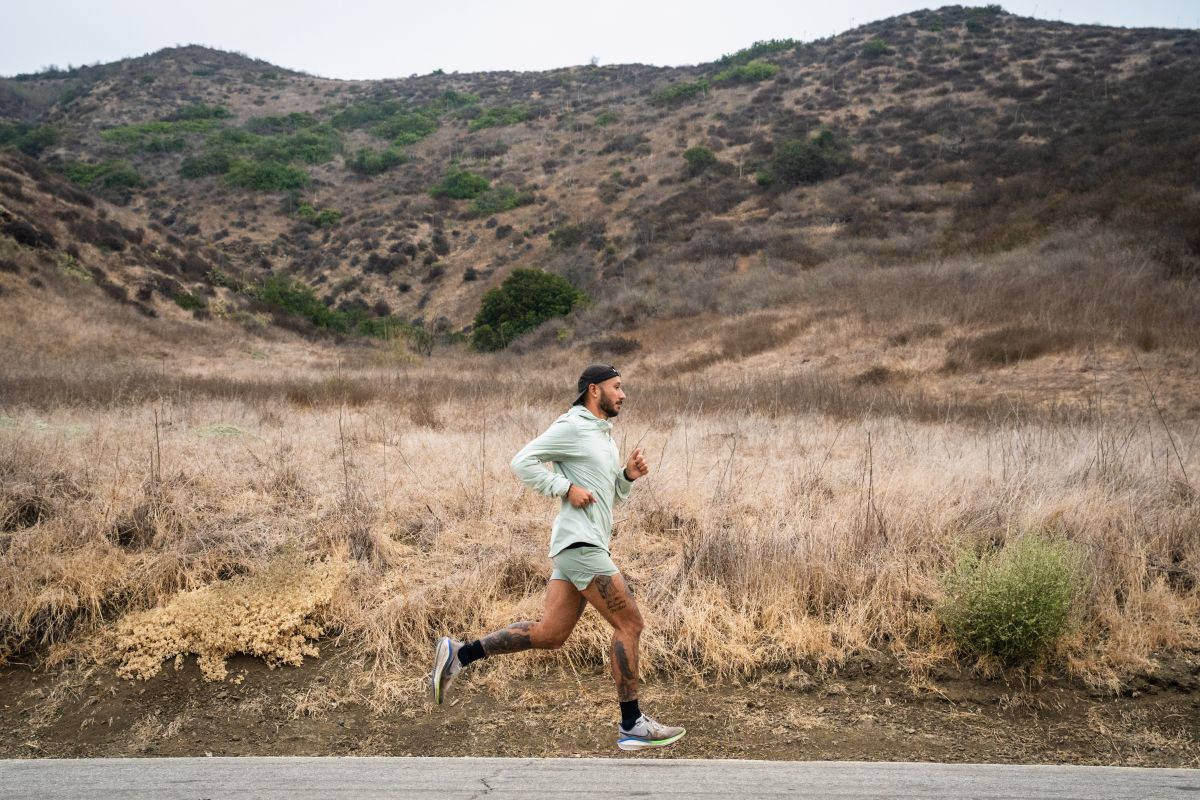
Worn backwards or forwards, hats are an important part of most runners’ wardrobes. Photo: iRunFar/Eszter Horanyi
Some running hats, like the Outdoor Research Sun Runner Cap, which features a snap-on cape made of breathable fabric, also protect the entire neck from the sun. If you don’t like the idea of a hat with a cape but still want to protect your neck and ears from the sun, consider a hooded shirt from our Best Sun Shirts for Running guide. You can also wear a Buff around your neck for additional sun protection. A mesh hat, like the Patagonia Duckbill Trucker Hat, won’t provide the back of your head much protection from the sun, which could prove to be an issue for some.
Increasingly, many hats also offer a UPF label, which informs shoppers how effective the material is at blocking UVA and UVB light. A UPF 15 or 20 rating indicates the fabric provides some protection, UPF 25, 30, or 35 delivers mid-level protection, and UPF 40, 45, 50, and 50-plus are the highest tiers of protection possible. Of the hats we tested, the Outdoor Research Sun Runner Cap had the highest UPF rating at 40.
Ventilation, Breathability, and Moisture-Wicking Abilities
The best running hats are made of synthetic materials that wick sweat, breathe effectively, and dry rapidly. The interior is usually lined with a wide, absorbent sweatband to prevent stinging sweat from falling into the eyes. Some hats have additional ventilation features, like laser-cut holes, mesh panels, and streamlined eyelets, to increase breathability. For the hottest days, you can use the Nathan RunCool Ice Run Hat to carry ice around on your head, and we frequently dip our hat into steams and lakes on hot days. You can learn more about the proper gear and useful techniques for running in the heat in our Best Running Gear for Hot Weather guide.
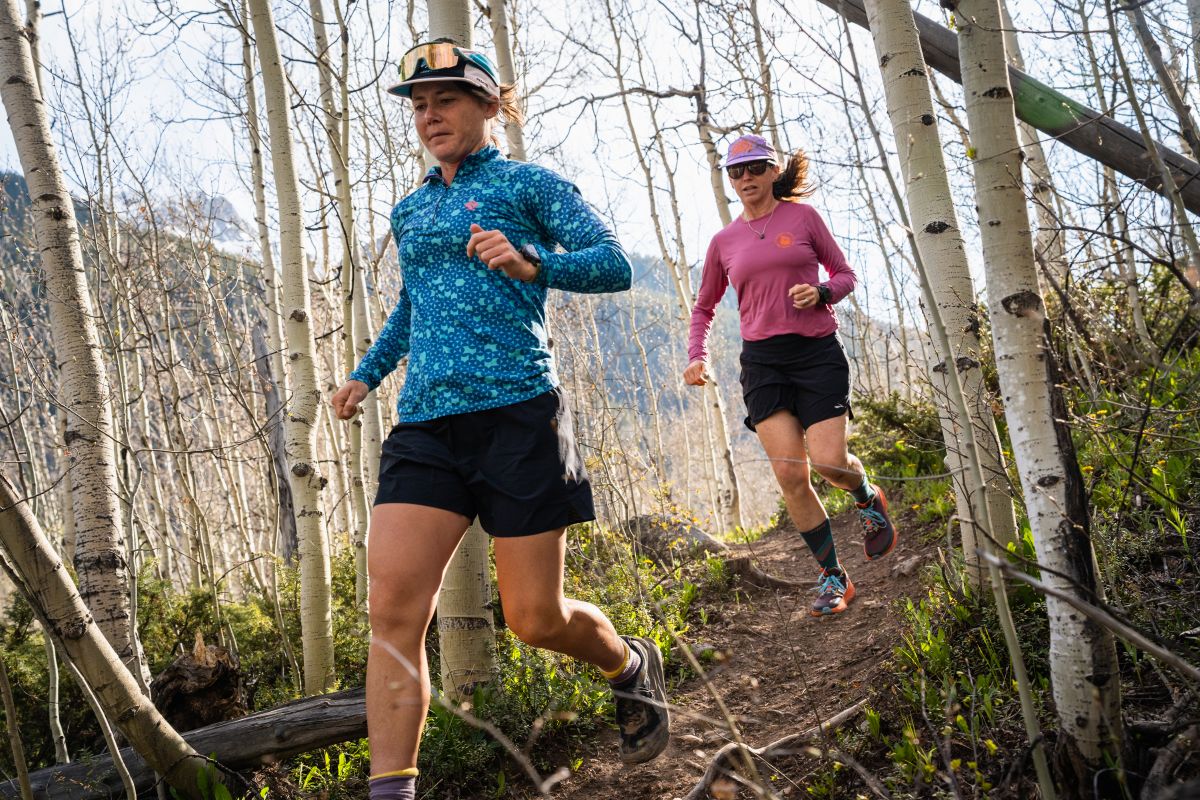
Sun protection and breathability are two important factors to consider when buying a running hat. Photo: iRunFar/Eszter Horanyi
Price and Durability
The running hats in this guide range from $25 to $45 and encompass what we consider to be a range of prices and styles for the best running hats on the market. A well-constructed hat made out of quality materials should withstand years of use if you follow its care instructions. If you sweat a ton, consider buying a darker-colored hat so it doesn’t retain sweat stains quite as easily. We loved the Headsweats Running Hat both for its functionality and its price. The Nathan RunCool Ice Run Hat also comes in at the same reasonable price.
Style
For some runners, style might be the top consideration. While inherently subjective, the look of a hat can influence your desire to buy (and wear) it. Some hats, like the Outdoor Research Sun Runner Cap with its neck cape and Nathan RunCool Ice Run Hat with its ice-cube pockets, provide excellent performance for running but might look out of place at the coffee shop after your run. Others, like the Territory Run Co. Long Haul Cap and the Patagonia Terrebonne Lightweight, have a more understated style that would work in multiple contexts. If you’re someone who likes fun designs and bold colors, check out the Janji AFO Hyperlight Cap for the heat and the Sauce Swift Toque for the cold.
Why You Should Trust Us
For the initial creation of this guide to the best running hats, we first polled members of the 20-plus-person iRunFar team about their favorite — and least favorite — running hats. We also researched dozens of the highest-ranked, most popular, and top-selling hats for runners, and we looked at popular hats in other sports.
To test hats, we followed rocky and smooth trails through high-altitude deserts and mountain slopes, sandy singletrack, steep granite canyons, sun-beaten loops, dense aspen groves, crusty post-holing ventures, and mud-caked routes. We ran pavement and dirt and endured frigid rain, blasts of snow, sunshine above 10,000 feet, and lip-chapping gales across the San Juan Mountains, Elk Mountains, and Front Range of Colorado, as well as peaks and deserts throughout Utah, Wyoming, and Montana.
We ranked each hat on its essential qualities, including breathability, sun protection, field of vision, comfort, and overall durability. Based on the scores, we loved the Headsweats Running Hat, Janji AFO Hyperlight Cap, and On Lightweight Cap. Many hats scored high in multiple traits, while others we tested didn’t make the top-tier cut.
Our team continues to take new hats out into the field for testing, and we update this guide regularly with new hats that stand out from the rest.

Both road and trail runners will appreciate a well-fitting, comfortable, and functional hat. Photo: iRunFar/Eszter Horanyi
Frequently Asked Questions About Running Hats
What is the best running hat?
The best running hat will fit your head well, be breathable, dry fast, and provide adequate sun and weather protection. For trail runners and ultrarunners, having a hat that doesn’t impede the visibility of trail obstacles is clutch. A hat’s ability to pack down into a pocket or pack during outings that continue after sunset is also important, and we appreciated that we could stuff the Janji AFO Hyperlight Cap into our pack without damaging the bill. You’ll also want to consider the style of a hat. If you’re looking for a hat to go anywhere in, consider the Patagonia Terrebonne Lightweight Hat, which easily doubles as a casual hat.
While this guide can’t possibly cover every great running hat on the market, it’s a good starting point for finding the best one for your needs. Our team voted the Headsweats Running Hat the best running hat we tested for its fit, functionality, and value.
Which is better, a visor or a running hat?
Using a visor versus a hat comes down to personal preference, which might change based on the season and environment. A visor shades your face and eyes from the sun, prevents sweat from dripping into your eyes, and is more breathable than a hat because it doesn’t have a cap. Visors are generally lighter and more packable than most hats because they include less material. However, a running hat can help prevent UV radiation from reaching the top of your head. The hat’s crown also protects the top of your head from incoming rain or snow. The material can even protect the top of your head from insects if dense enough. If you want a hat with great ventilation, the Patagonia Duckbill Trucker Hat has plenty of mesh to allow for airflow.

The mesh back of the Patagonia Duckbill Trucker Hat (front) breathes well, and the soft brim makes it easy to stuff into a pack. Photo: iRunFar/Eszter Horanyi
Why not just run in a ball cap?
A ball cap should suffice for a short run, so if that’s what you have, go for it! However, most baseball caps are 100% cotton, which retains moisture. Cotton is a hydrophilic fabric that absorbs water, whether in the form of precipitation or perspiration, and it doesn’t dry fast, either. Cotton hats aren’t very comfortable during sweaty jaunts or in the rain. Traditional ball cap designs are also lack ventilation. The more time you spend running, the more returns you’ll see from an investment in a running-specific hat. If you are interested in wearing a hat while running that looks more like an everyday hat, consider the Patagonia Terrebonne Lightweight Hat.
Can I wear my hat under a helmet?
Many runners do multiple sports, some of which include wearing a helmet. If you’re looking to fit your hat under a helmet, you’ll want to find one that has minimal structure and thickness. We found that the Patagonia Duckbill Trucker Hat fit easily and comfortably under a helmet without altering the fit too much. Hats with minimal cap structure, like the Headsweats Running Hat, also tend to work well with helmets. Most helmets have a bit of adjustability on the head circumference so that you can loosen them up to wear a hat underneath. If you want to wear a winter hat under a ski or mountaineering helmet, the Sauce Swift Toque is thin enough to accommodate most situations. We also wore it under a bike helmet.

iRunFar’s Meghan Hicks wears a hat under a helmet while scrambling peaks in the San Juan Mountains of Colorado. Photo: iRunFar/Eszter Horanyi
Why do I get headaches when wearing a running hat?
External compression headaches caused by headwear occur when a hat places continuous pressure on the head. Most running hats are one-size-fits-all with an adjustable strap in the back. If you experience a headache, adjust the back strap to loosen it. A hat shouldn’t shift around or be too tight and restrictive. Normally, you should not have forehead imprints or red marks after wearing your hat unless you encounter serious wind and need to tighten a hat down for a while. We found that the Territory Run Co. Long Haul Cap did a great job staying in place without being too tight, and hats with short brims, like The North Face Summer LT Run Hat, also stay put in the wind better.
Why should I wear a hat when I run?
A hat protects your skin from sunburn and your eyes from strain. Most hats also have an interior sweatband that wicks sweat, preventing salty droplets from blurring your vision or burning your eyes. They can also help protect your face and sunglasses from incoming rain and snow. For runners with a lot of hair, a hat can also secure wisps from flying into their eyes, especially on windy days. On a hot day, dunking your running hat in a stream or lake can help cool you down. Those looking to maximize their protection against the sun will appreciate the removeable cape of the Outdoor Research Sun Runner Cap, which provides protection for the ears and the back of the neck without getting too hot.
Which hat is best for racing?
Many trail runners and road runners alike wear hats during their races for all of the reasons we’ve outlined. If you choose to race in a hat, it’s important to find one that you trust and fits well so you don’t to adjust it mid-race and potentially lose valuable time. You’ll likely want a lightweight hat that doesn’t weigh you down or cause you to overheat. Most of the hats in this guide will serve you well while racing, with the Headsweats Running Hat having the distinction of being both affordable and able to tick all of the boxes of being race ready.
Can I wear a headlamp while wearing a hat?
If you’re in a race that goes from day to night or night to day, you may not want to mess around with having to put your hat away when the headlamp goes on. Depending on your specific hat and headlamp, there are multiple ways to make everything work. Most people turn their hats around so that their hat brim doesn’t interfere with the lighting. The short brim of the The North Face Summer LT Run Hat makes it easy to wear backward, even if you’re carrying a pack. With a backward hat, you can easily adjust the angle of the headlamp for optimal visibility. If your headlamp is a single strap that goes around your head, you can sometimes wear it comfortably under the brim of your hat. If your hat has a very short brim, it’s possible to wear the headlamp on top of a forward-facing hat above the brim without losing much ground illumination. If you’re considering different options for a lamp that would work with a hat, look at our Best Running Headlamps guide.

Eventual UTMB winner Vincent Bouillard (left) and Tom Evans (right) run with their hats backward to accommodate headlamps during the early night hours of 2024 UTMB. Photo: iRunFar/Eszter Horanyi
Does wearing a hat backward provide sun protection?
Most of the best running hats have a fair bit of versatility in how they can be worn. Hats with shorter brims are more comfortable to wear backward, especially if you’re wearing a pack. We appreciated how easily and comfortably The North Face Summer LT Run Hat is worn forward and backward with its short brim. That said, a short brim doesn’t provide nearly as much sun protection, regardless of the orientation you’re wearing it in. A hat like the Janji AFO Hyperlight Cap has a moderately sized brim that provides a good amount of shade when worn forward and shelters the neck when worn backward.
Call for Comments
- Have you used any of the hats on our list? Do you agree with our assessments?
- What’s your favorite hat to run in?
